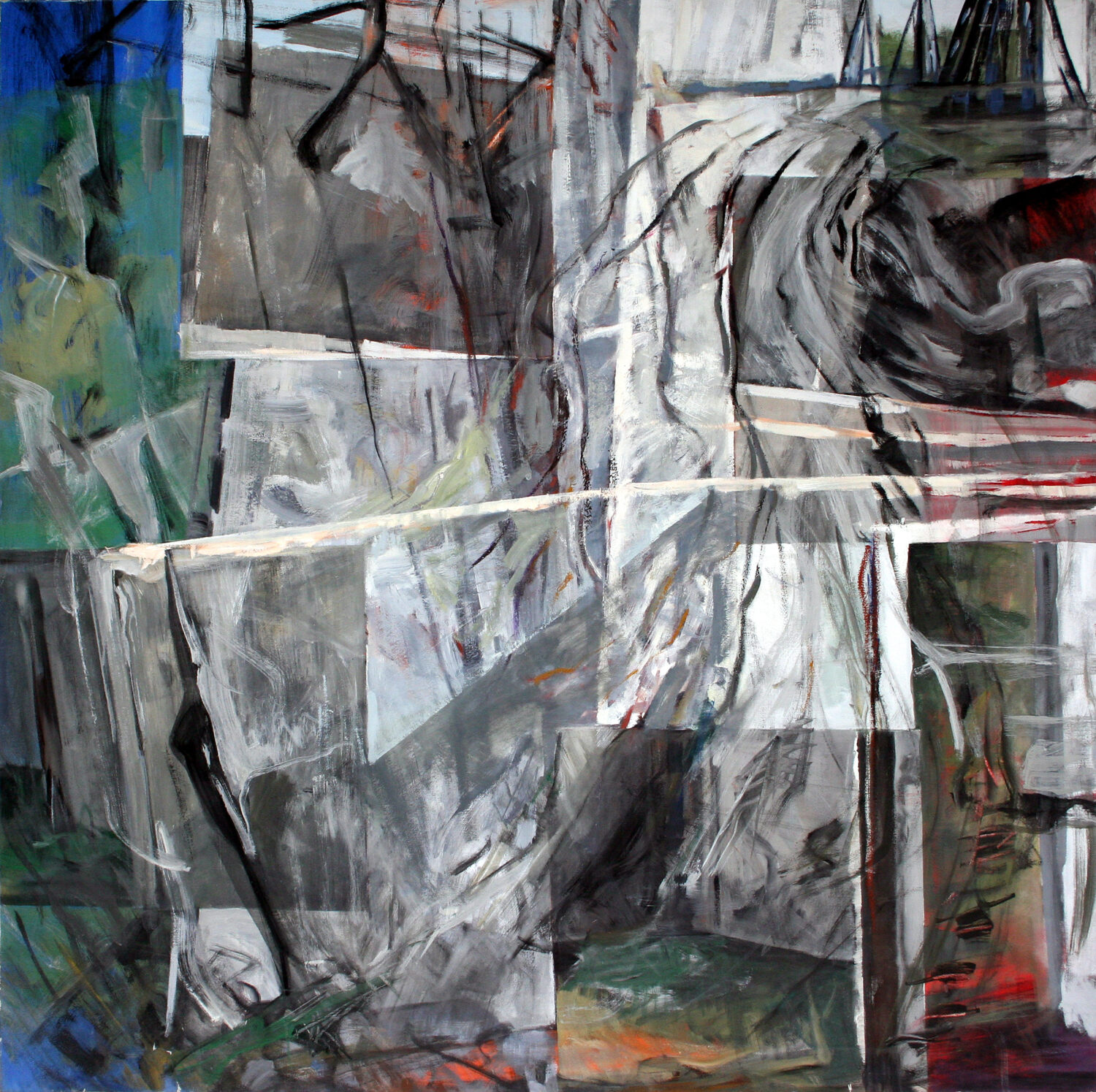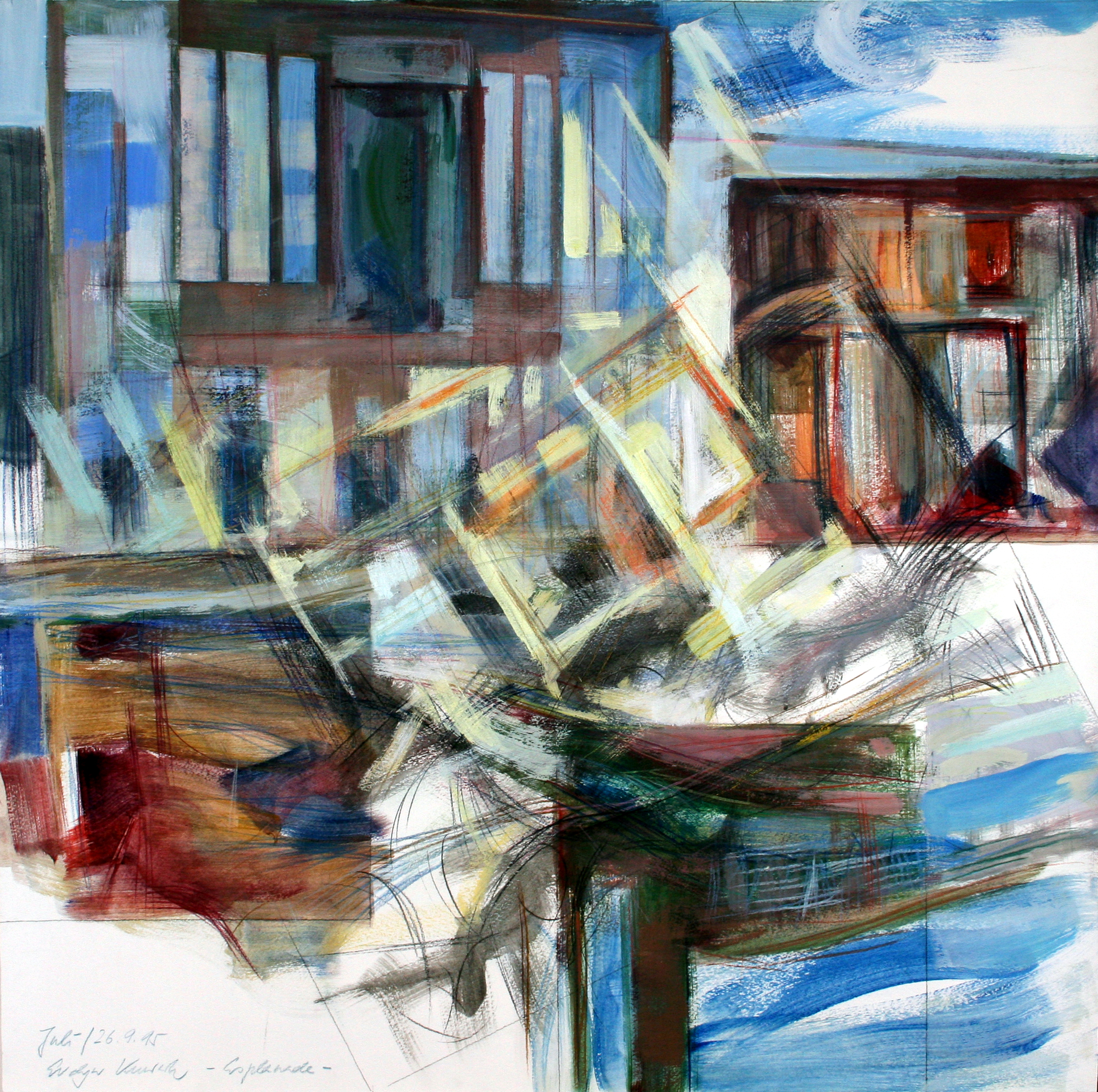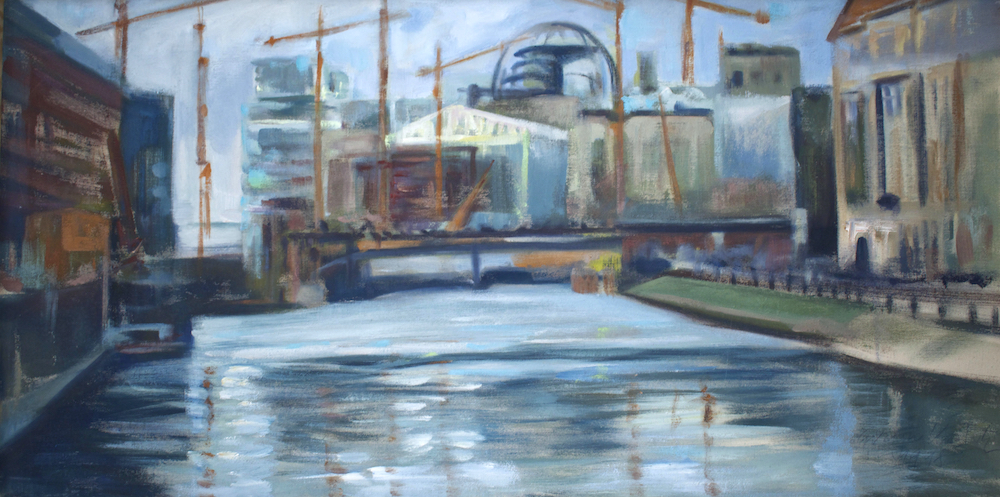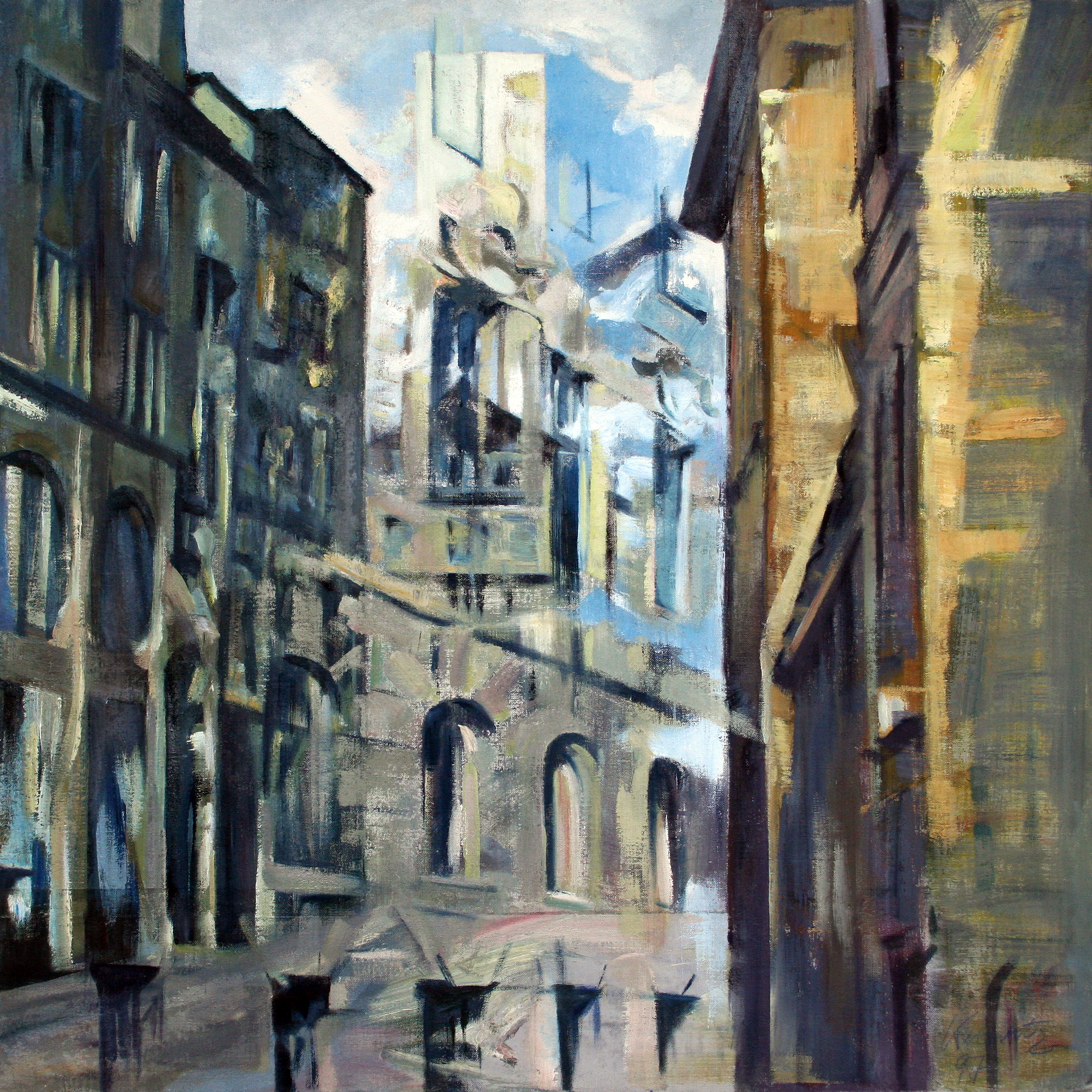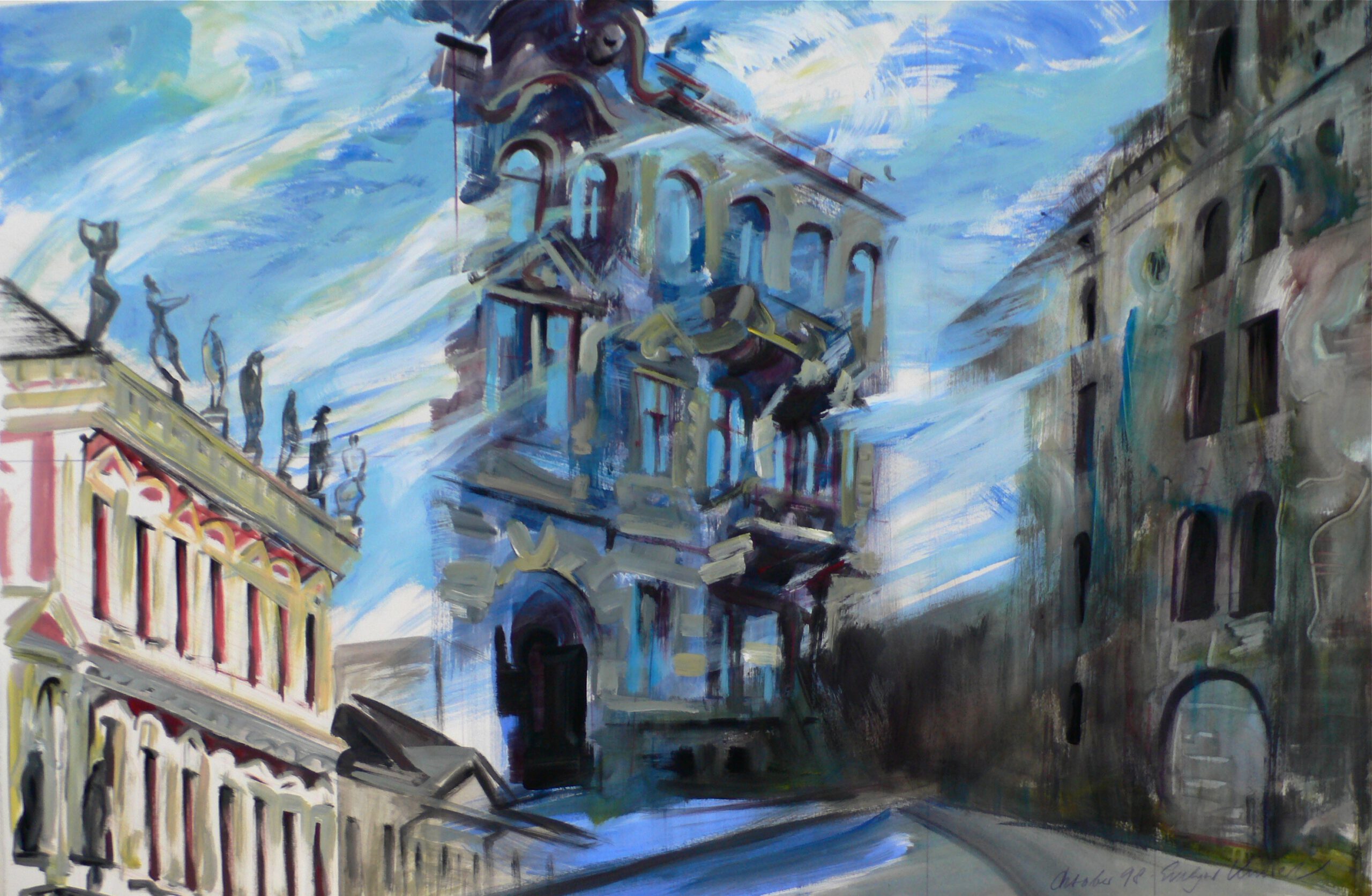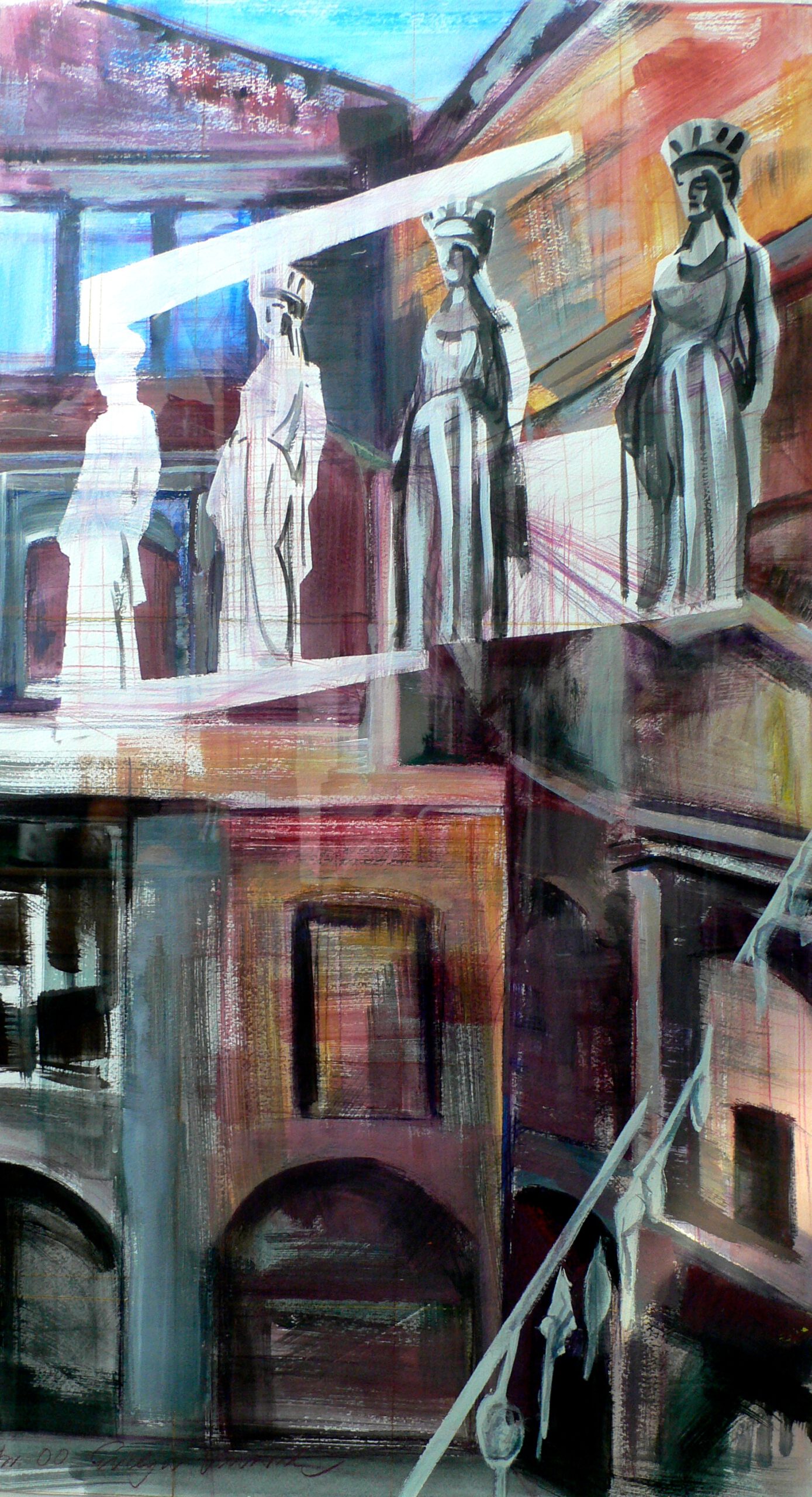Berlin after Reunification 1989-1999
After the political change, I turned my focus on the process of change around the old / new center. The opening of the Wall on NOVEMBER 9TH, AT POTSDAMER PLATZ, the now accessible and empty area made possible previously unknown perspectives of the adjacent buildings. Soon the square became a large construction site that permanently changed its shape, the yellow sand broke up, a lake formed, construction cranes and scaffolding enlivened the square. I observed the relocation of entire sections of the facade of the ESPLANADE, the reconstruction of the REICHSTAG. Likewise Pariser Platz, facades were erected and torn down, scaffolding through which the wide sky fell, the reconstruction of the HOTEL ADLON and the spatial renovation processes of the historic city center of BERLIN MITTE. Although the encounters between people from East and West were in the foreground in the public eye, they are absent from these images. Rather, the events are reflected in the changing cityscape. The places became eloquent, the still visible old center of the east was interspersed with colorful signals, a new center was announced. Activity broke the melancholy.
Museum Island and the New Museum
Mage motifs are the exterior views of the buildings from different urban development epochs that make up the historical MUSEUM ISLAND.
1997-1999 I concentre mostly on the NEUE MUSEUM. I prepare on-location sketches of the gutted remains of the inner spaces. The light floods the building storeys and structures the architecture and the supporting pillars with its shadows. A moment of calm – only the red scaffolding pointed to the coming construction work – in which faded beauty could be intuited and the destroyed sculptures can be imagined. The various rooms are depicted in a series of paintings and mixed techniques on paper, and the method of montage is used to intersperse the building’s current state with historical quotes, for instance the Greek Courtyard with the Schievelbein frieze.
